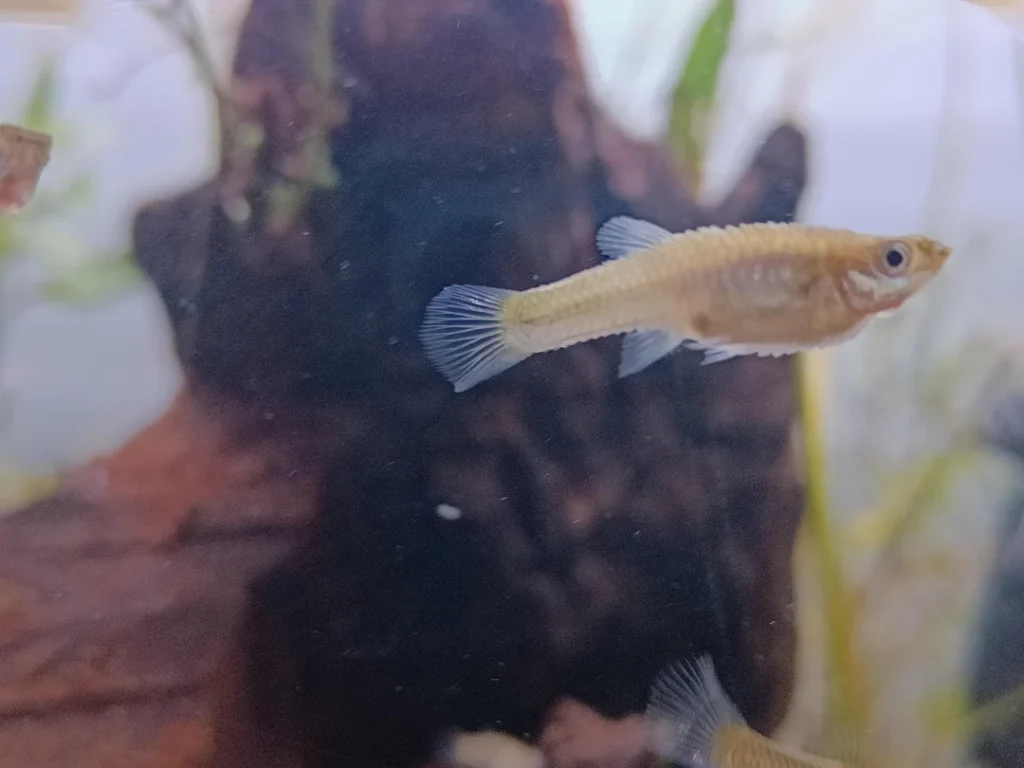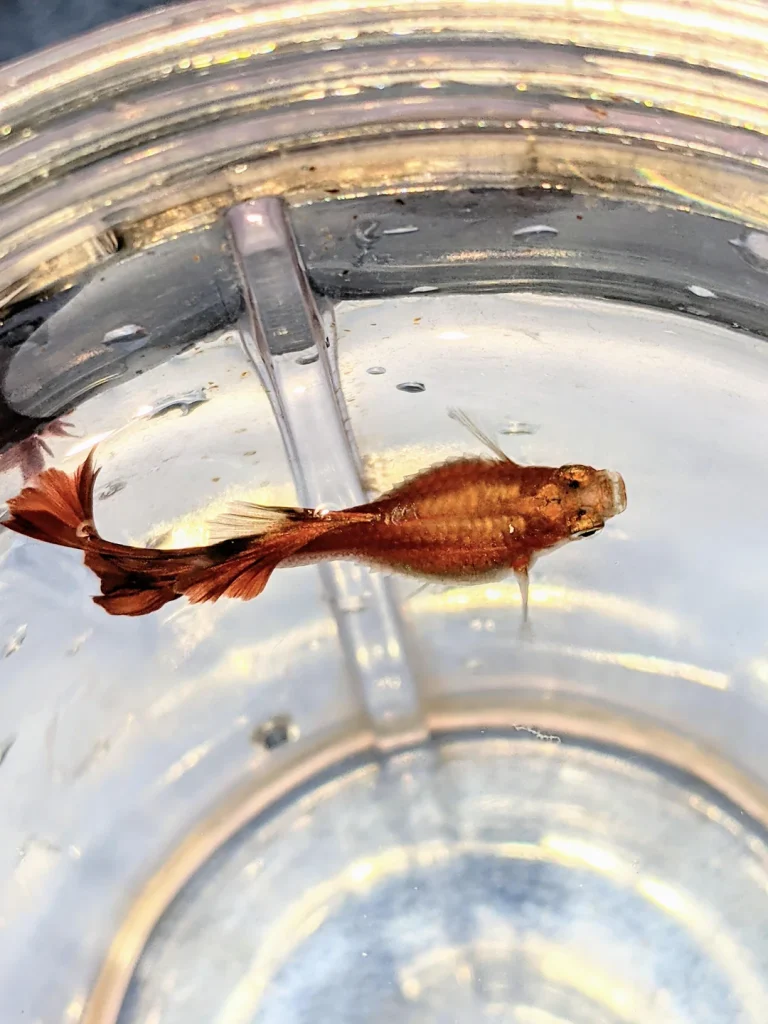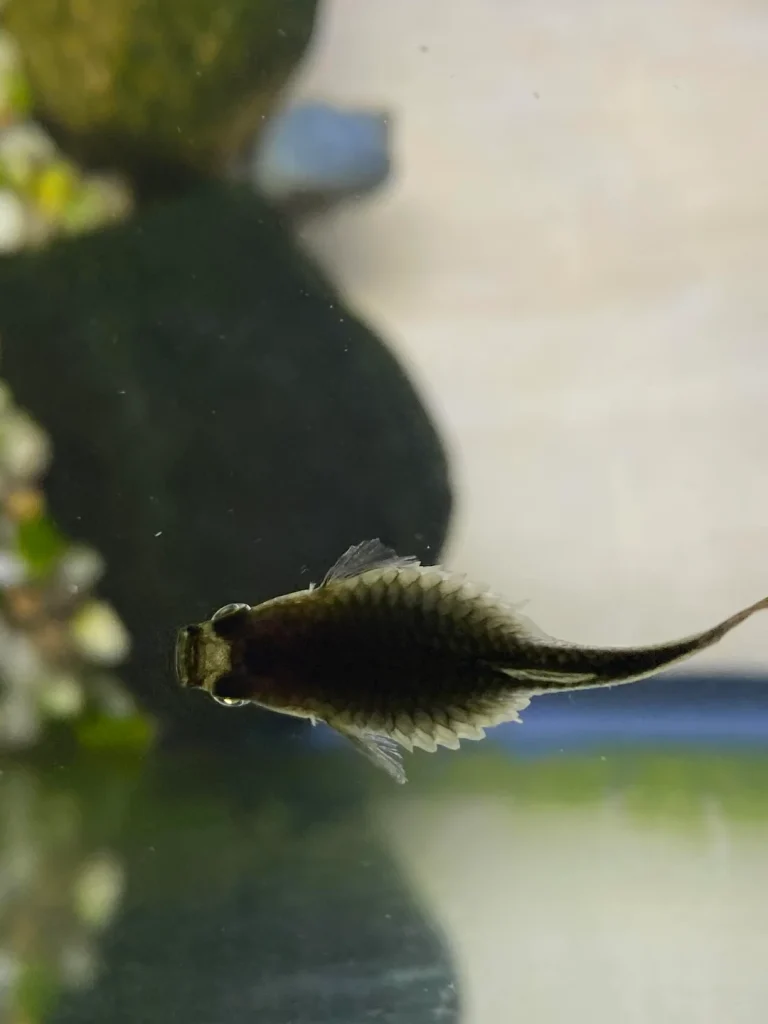How to Treat Guppy Dropsy
In this article, I’ll teach you how to treat guppy dropsy. I don’t want to sugarcoat it- to treat guppy dropsy may be a long shot.
While I have seen guppies make a 180 and live long, happy lives- dropsy is usually a sign that the end is near.
TL;DR Summary
Guppy Dropsy Under 60 Seconds
How to identify guppy dropsy
Guppy dropsy comes to light in the form of a bloated appearance, pinecone-like scales, and lethargy. You may also spot a loss of appetite.
What causes it
Dropsy is often a symptom of underlying issues such as bacterial infections, kidney or liver problems, or poor water quality. Poor nutrition and stress can cause dropsy.
And how to treat it
Dropsy is usually a sign of the end. If you choose to treat it, isolate the affected guppy in a quarantine tank and use antibiotics. You can also use Epson salt to help boost her immune system.
Recovery may vary, but early intervention improves the chances of success.
How To Identify Guppy Dropsy
Guppy Dropsy Symptoms
Here are some of the possible symptoms of guppy dropsy. Remember that sometimes you may only see some, while in other cases you’ll see more.
- Abdominal bloating or swelling
- Pinecone-like scales (raised and protruding)
- Lethargy
- Loss of appetite
- Isolation from other fish
- Clamped fins
- Pale or discolored skin
- Stringy or white feces
- Difficulty swimming or staying balanced
What Is Dropsy In Guppies
Unliked other guppy diseases, dropsy is not a genetic defect or parasitic infection.
That means that guppy dropsy is an indicator that your fish needs a little more attention than the others.
It may be because it’s getting older, but may it has other illnesses that are coming to light.
How To Treat Guppy Dropsy
Step 1: Quarantine Your Guppy
The first step is to isolate the affected guppy in a separate quarantine tank. This is crucial to prevent the potential spread of the condition to other fish in your aquarium. Ensure the quarantine tank has clean, dechlorinated water and excellent aeration.
Step 2: Epsom Salt Bath
I like to give my guppy an Epson salt bath to help with the bloating.
Here’s how you do it:
- Dissolve Epsom salt in warm, dechlorinated water. Use 1 tablespoon of Epsom salt per 5 gallons of water.
- Place your guppy in a container with this solution for about 10-15 minutes.
- Observe the fish closely during the bath. If it shows signs of distress, remove it immediately.
- Repeat the bath daily until you see improvement.
Step 3: Antibiotics
Dropsy often involves a bacterial infection, so antibiotic treatment is essential. Consult your local fish store or veterinarian for suitable antibiotics.
I’ve used Kanamycin and Nitrofurazone in the past.
Follow these steps to administer antibiotics:
- Mix the antibiotic medication according to the package instructions.
- Administer the medication to your quarantined guppy as directed. This is usually done by adding the medication to their food.
- Continue the antibiotic treatment for the recommended duration, even if your guppy seems to be improving.
Step 4: Maintain Water Quality
Antibiotics are not the end of the treatment- they are just part of it.
The “meat of potatoes” of the treatment is water changing. You want to the water to be as comfortable as possible.
Guppies are sensitive to changes in water quality. Perform small water changes regularly to remove waste and medication residues, which could further stress your guppy.
Step 5: Supportive Care
Guppies with dropsy may lose their appetite, so offer them small, easily digestible foods like frozen or live brine shrimp. Consider adding a broad-spectrum fish vitamin supplement to their diet to boost their immune system.
Step 6: Patience and Observation
Recovering from dropsy is a gradual process, so patience is key.
Keep a close watch on your guppy, looking for any signs of improvement or worsening symptoms.
Dropsy can be challenging to treat, and not all cases have a positive outcome, but giving your guppy the best chance at recovery is what counts.
How You Can Prevent Guppy Dropsy
Preventing guppy dropsy involves maintaining good fish-keeping practices and creating a healthy environment for your guppies.
You can’t prevent dropsy 100% of the time, but for the most part, it is preventable.
If this is your first tank or your first case of dropsy- don’t feel bad about yourself.
It happens to everyone. Take this a learning curve rather than beat yourself up.
Now, let’s move on and learn how to prevent guppy dropsy
1. Water Quality
- Regularly test and maintain water parameters like temperature, pH, ammonia, nitrite, and nitrate levels within recommended ranges.
- Perform regular water changes (approximately 20-25% every 1-2 weeks) to ensure a clean and stable aquatic environment.
2. Quarantine New Fish:
- Always quarantine new fish before introducing them to your main aquarium. This helps prevent the introduction of diseases, including those that can lead to dropsy.
- If you notice any signs of illness in your guppies, quarantine and treat them in a separate tank as soon as possible.
3. Filtration and Aeration
- Use an appropriate filter to maintain good water circulation and filtration, which can help remove waste and toxins.
- Ensure adequate aeration to maintain oxygen levels and reduce stress on your guppies. This can be achieved by using an air stone or aquarium plants.
4. Nutrition
- Provide a balanced and varied diet to meet your guppies’ nutritional needs. High-quality flakes, pellets, and occasional live or frozen foods are all good options.
- Avoid overfeeding them, though. Excess food will murky your water- which means you’ll either have to clean it more often or undo good work by lowering their living conditions.
5. Stress Reduction
- Another great way to fight guppy dropsy is to minimize stress factors such like sudden water parameter changes, overcrowding, or aggressive tank mates.
- You also want to maintain a stable and suitable water temperature for your guppies (usually around 78-80°F or 25-27°C).
6. Hygiene
- Practice good hygiene by regularly cleaning and disinfecting aquarium equipment, including nets and decor, to prevent the introduction of pathogens.
Conclusion
Guppy dropsy is usually the result of bad water conditions. With that said, some fish are more predisposed to get it than others.
To treat your sick guppy, quarantine the fish and treat it with antibiotics. You can also do Epson salt baths to alleviate symptoms.
And lastly- a favor. Will you drop me a comment below to let me know how your fish is doing, and if you have any other treatments you’ve tried?



